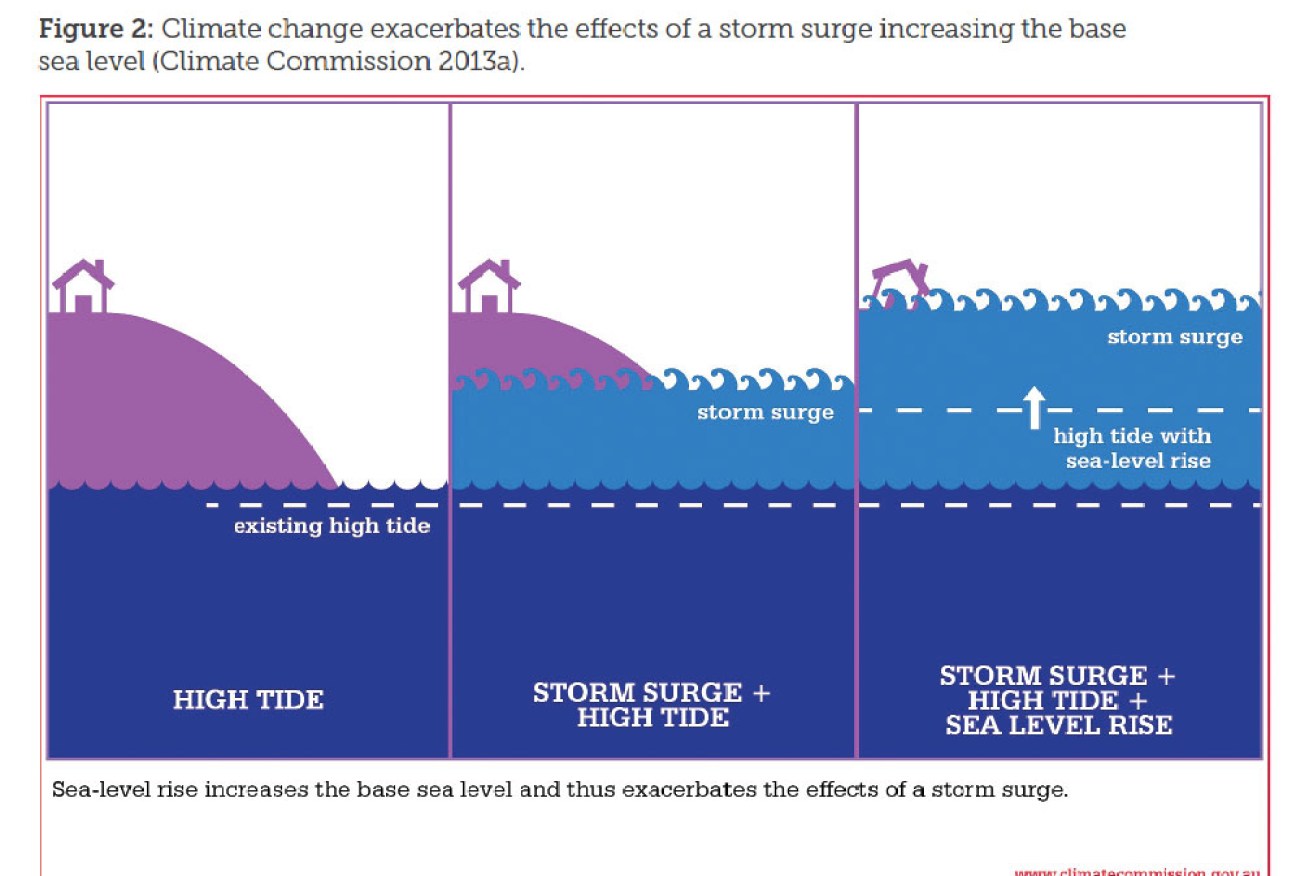Why you may be taking a risk living near the ocean

Perhaps the ideal home of most Australian retirees is not a plush mansion in Toorak or the Adelaide Hills, but an affordable ocean-facing cottage that looks and feels cosy.
The most sought-after properties in the country are invariably located “on the water” and those with picturesque views of the sea can fetch ridiculous premiums at auctions.
However, if climate scientists are right, home owners living within earshot of the ocean are also taking on one of the big perils of global warming.
• Opening your own cafe: some tips from an expert
• Politicians, super industry at odds over house deposits
• Clever ways $20k can give your home a makeover
A recent report published by the Climate Council contains disturbing forecasts on the likely effects of climate change on flood activity along the Australian coastline.
With average sea levels expected to rise by up to a metre in the next 85 years, the Climate Council is predicting that coastal regions will become increasingly prone to inundation.
The likely risks are great enough that thousands of people may be forced to evacuate properties as some coastal areas become uninhabitable towards the end of the century.
Quantifying the impact
One of the report’s authors, Professor Will Steffen of the Australian National University, believes that increased coastal flooding is one of the “certainties” of climate change.
“Sea level rises are one of the most certain events of climate change,” he said.
“We know it has been going up in the last century.
“If your coastal property is already prone to flooding then you’re looking at some hefty increases in those risks in the future.”
Professor Steffen estimates that infrastructure and dwellings valued at $226 billion are at risk of coastal inundation if sea levels rise by 1.1 metres.
These assets are located within 200 metres of coastal areas that are known to have experienced floods.
According to the report, up to 250,000 homes on the Australian coastline are at risk of inundation if average sea levels rise by more than a metre.
The combined value of these houses at 2008 replacement values is $72 billion.
The impact of rising sea levels is likely to be even greater on social infrastructure and commercial assets.
Here’s a list of national infrastructure assets at risk:
• 120 Port facilities
• 5 Power stations
• 258 Police, fire and ambulance stations
• 75 Hospitals
• 44 Water and waste facilities
Places at risk
Every state and territory is exposed to the effects of rising sea levels, but some states and regions are more likely to be affected.
Coastal towns and cities near estuaries and which have a history of flooding are most at risk.
According to the report, the two states most exposed to higher sea levels are Queensland and South Australia.
The report estimates that the replacement cost for coastal property assets at risk in Queensland exceeds $50 billion while in South Australia the cost could range as high as $45 billion.
NSW has around $40 billion of infrastructure at risk, including 68,000 homes if sea levels rise by more than a metre.
Under the same scenario, around 48,000 coastal homes in Victoria would be imperilled and 15,000 in Tasmania.
Floods caused by rising sea levels excluded in most insurance policies
Property owners should not expect insurers to pick up the tab of replacing their homes following climate change events.
The nation’s largest general insurer, Australian Insurance Group, confirmed to The New Daily that inundation caused by rising sea levels is specifically excluded from home and contents policies.
“We do not include sea level rise in our premiums because damage caused by the sea, including erosion, sea level rise and high tides is not covered under our policies,” an IAG spokeswoman said.
“This is listed in the ‘General exclusion’ sections of the Policy Disclosure Statements (PDS) for each of our home insurance policies.
“The only time we cover sea damage is if the damage to the home was caused by a tsunami.”
Before you buy, do some homework …
A prudent investor interested in buying a coastal property can learn about the flood-risk profile of a location by making enquiries at a local council.
Most councils keep information on the flood history of property locations within their municipalities.
Prospective buyers should also consult climate change inundation risk maps here.

Maybe a caravan would suit your needs? Photo: Shutterstock
These maps, prepared by GeoScience Australia and the CSIRO, will give you a guide as to the flood risks in different coastal regions under various sea level rise scenarios.
Not all coastal areas are covered by the service, but risk maps are available for most suburban areas of the major cities.
… or buy a caravan instead
If the threat of climate change has already put you off buying a coastal home, then a caravan or motor-home might be an alternative.
Caravans are comparatively cheap to buy and run compared to fixed dwellings and you can take them almost anywhere.
If you already own a coastal property in a flood-prone area, they might also be useful if, or when, the sea hits your kitchen fan.
*To read more about the Climate Council’s report “Counting the Costs: Climate Change and Coastal Flooding” click here.










